Abstract
1 Intravenous heroin (diamorphine) was administered to volunteers, in doses of 2.5 and 5 mg to non-dependent and doses of 1/6, 1/3 and 1/2 of their prescribed daily dose of opiates to dependent subjects, and heart and respiration rates, blood pressure, body and skin temperature and skin conductance were measured before and for 2 h after injection. 2 Heart rate fell and continued to fall after injection in both groups of subjects although the time course was different in the two groups. This was thought to be a non-specific effect of heroin. 3 Respiration rate fell after injection in both groups. The dependent group showed a faster recovery of pre-drug respiration rate. This was interpreted as being due to tolerance in the dependent group. 4 Systolic blood pressure fell only in the dependent group and diastolic blood pressure only fell after injection of the largest dose of heroin in both groups. 5 Body temperature fell after injection of heroin in a similar way in both groups while neither skin temperature nor skin conductance changed. This was interpreted as a drug-induced alteration in thermo-regulatory mechanisms. 6 Placebo had no effect on any of these measures. There were no differences between the responses of the high and low dose dependent subjects to different doses of heroin nor did prior ingestion of methadone affect any of the measures.
Full text
PDF
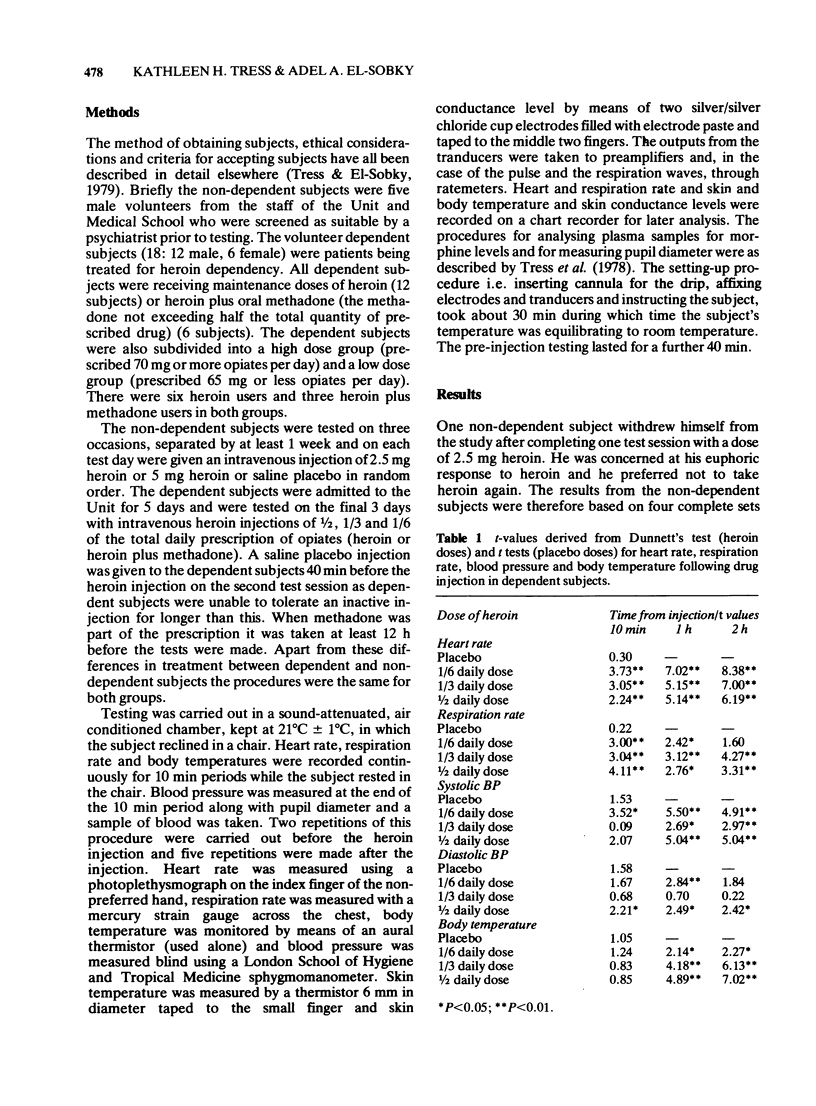
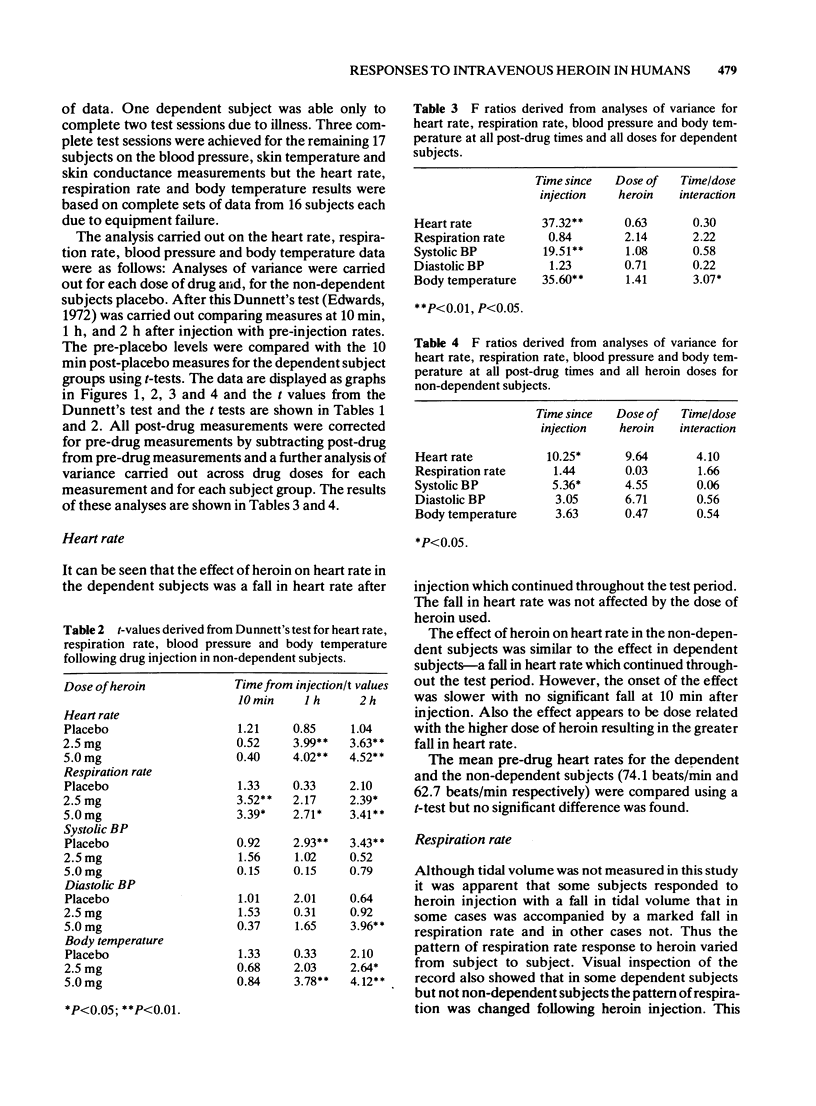

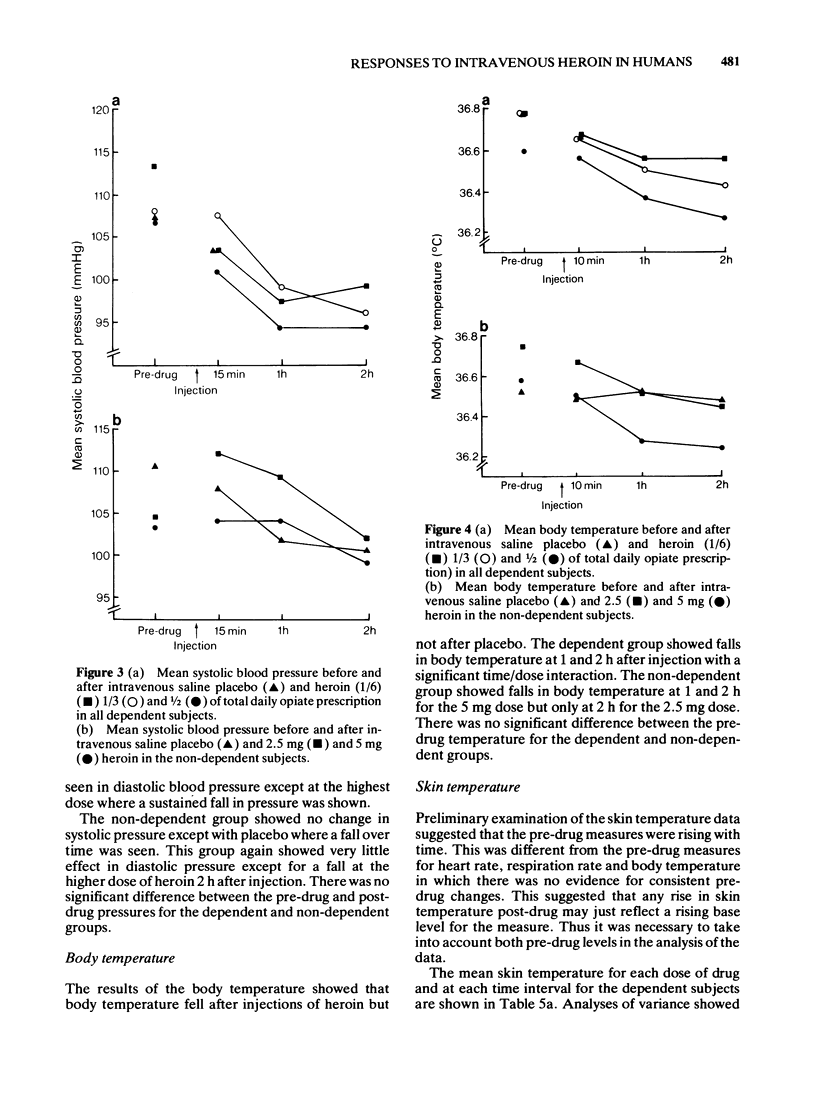
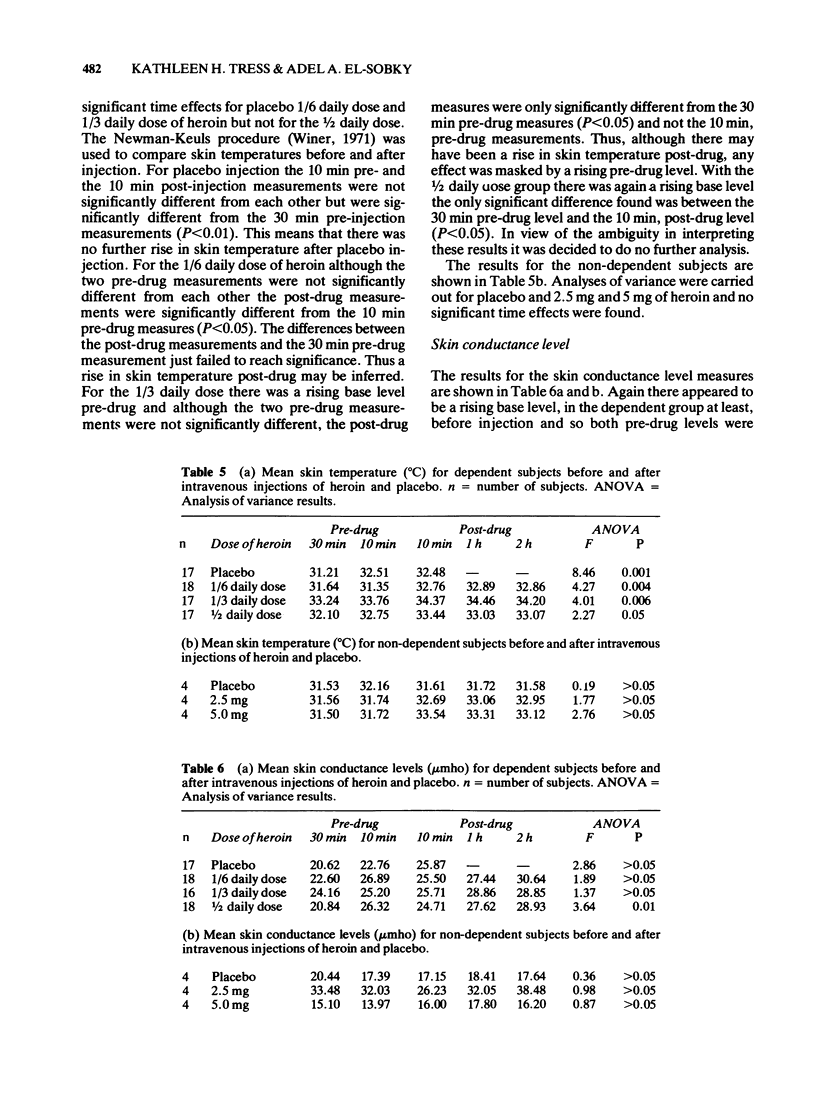
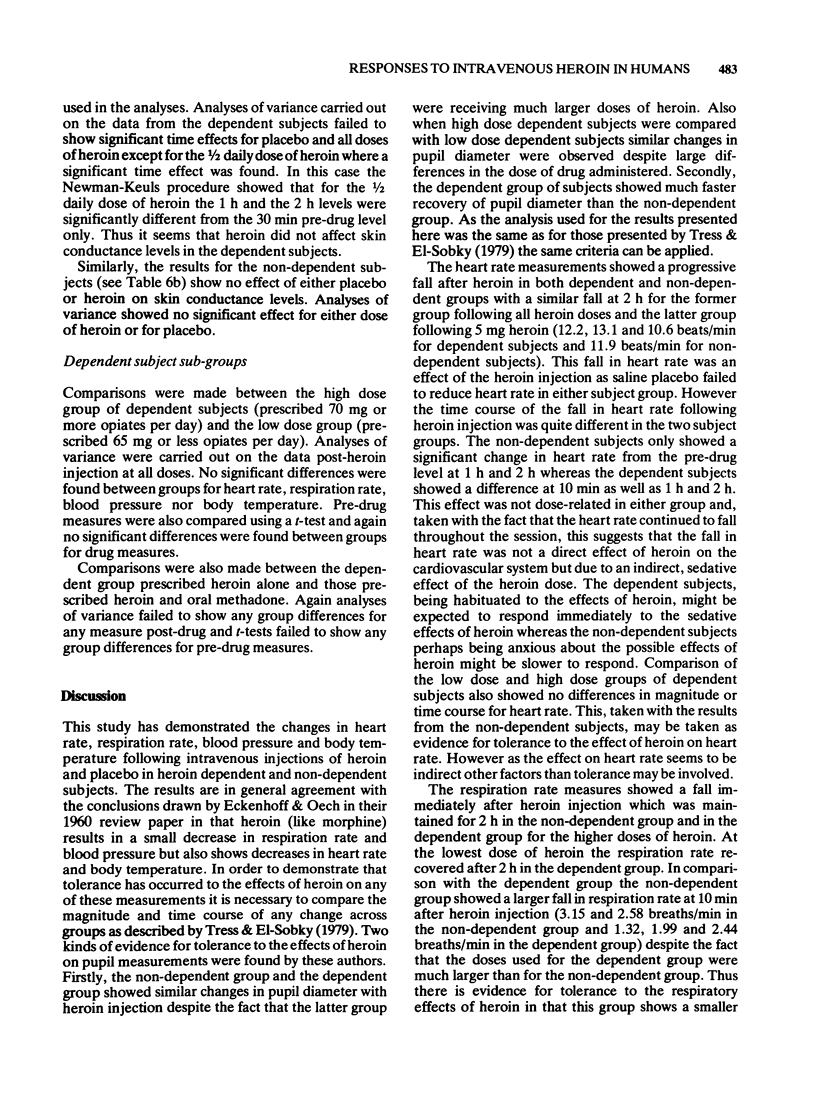
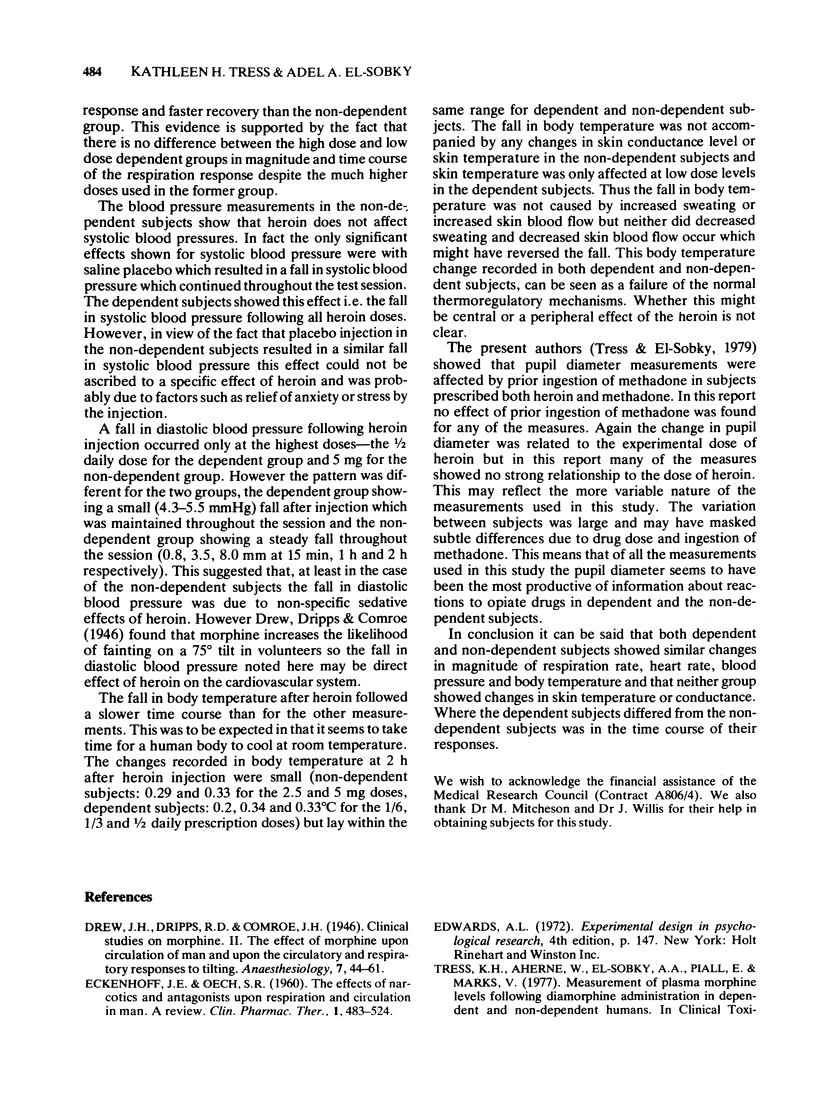

Selected References
These references are in PubMed. This may not be the complete list of references from this article.
- ECKENHOFF J. E., OECH S. R. The effects of narcotics and antagonists upon respiration and circulation in man. A review. Clin Pharmacol Ther. 1960 Jul-Aug;1:483–524. [PubMed] [Google Scholar]
- Tress K. H., El-Sobky A. A. Pupil responses to intravenous heroin (diamorphine) in dependent and non-dependent humans. Br J Clin Pharmacol. 1979 Feb;7(2):213–217. doi: 10.1111/j.1365-2125.1979.tb00924.x. [DOI] [PMC free article] [PubMed] [Google Scholar]


